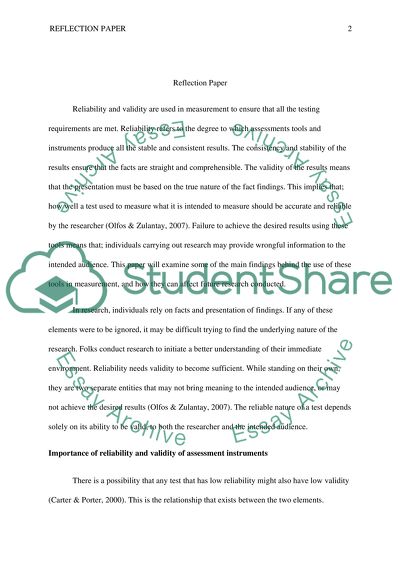Reliability and validity as a major tools in measurement Research Paper. Retrieved from https://studentshare.org/psychology/1467688-reliability-and-validity-as-a-major-tools-in-measurement
Reliability and Validity As a Major Tools in Measurement Research Paper. https://studentshare.org/psychology/1467688-reliability-and-validity-as-a-major-tools-in-measurement.


